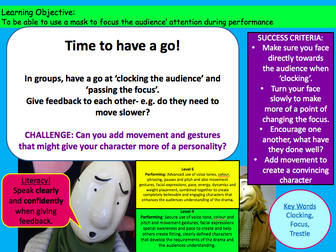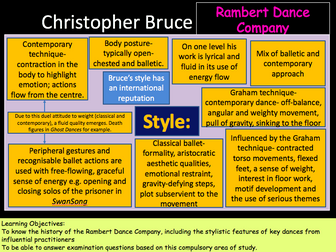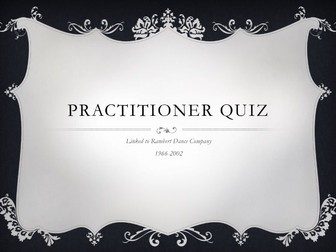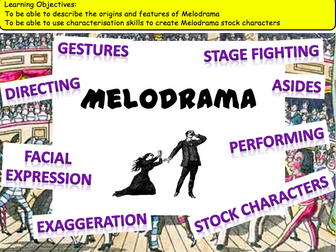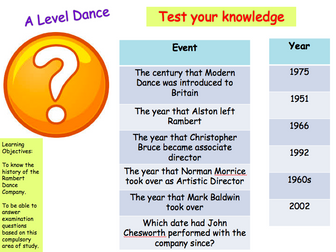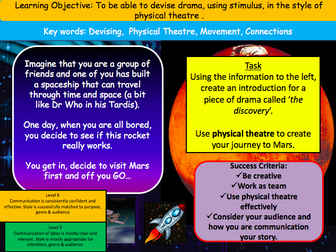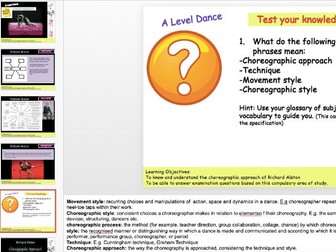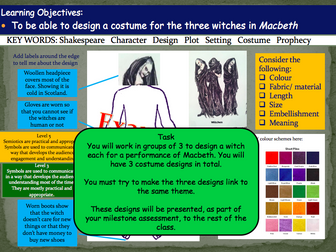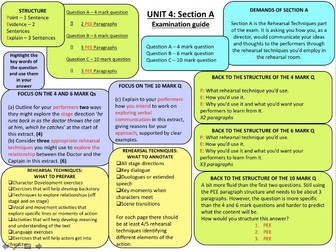KS3 TRESTLE MASK DRAMA SOL
This resource introduces Trestle Mask theatre/drama to KS3 students in a fun and chunked down way. <br />
<br />
Each lesson builds upon the next and is accessible by teachers through colour coordinated slides to show each different lesson, a brief summary of the content of the lesson at the start of each one and an explanation of the tasks in the notes section. <br />
<br />
The PowerPoint is visual and colourful to motivate the students and encourages students to engage with the work. There are games to focus and develop skills of the students whilst alongside practical work that enhances the movement and non-verbal skills of the students.
